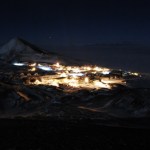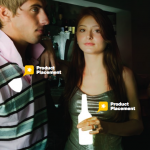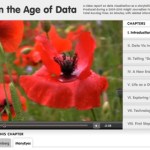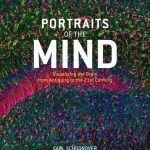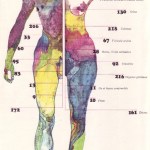blogosphere
This is un freaking real.
My friend John O at Armed With Science has dug up a classic animated film produced for the National Naval Medical Center in 1973. It starts with an awards ceremony for the "Communicable Disease of the Year," hosted by the Grim Reaper (who turns out to know a lot about medical history.)
The top prize is won by the Dracula-esque Count Spirochete (AKA syphilis), over the vociferous objections of a shortlist of other diseases, including smallpox ("I've scarred and disfigured millions of people!") and gonorrhea (who resembles a lavender Tribble with a pitchfork). The…
FYI:
Science Art-Nature and the American Association for the Advancement of Science (AAAS) present the "Science Without Borders" online art exhibition in conjunction with the annual meeting of the American Association for the Advancement of Science, Washington, D.C., February 17 - 21, 2011.This on-line art exhibition, was conceived to display and promote the best contemporary Science Art and to encourage discourse between the scientific and artistic communities. Designed as a companion to the national meeting of the American Association for the Advancement of Science, each selected piece of…
Some awesome photos from NSF teams working in Antarctica (click for larger versions). This one makes me want to hum "O Little Base of McMurdo, how still we see thee lie. . . "
McMurdo base by night
James Walker/NSF
Palmer Station Sunset
Lisa Trotter/NSF
Aurora australis over McMurdo
Ken Klassy/NSF
Amundsen-Scott Station
Mel McMahon/NSF
Source: 'Dispatches from Antarctica,' a series of posts by Air Force Lt. Col. Ed Vaughan with OPERATION: DEEP FREEZE, the Defense Department's support of National Science Foundation research in Antarctica. Vaughan's ongoing series of posts includes an…
Dave Hone's blog, Archosaur Musings, is hosting a wonderful series of interviews with paleoartists - artists and illustrators who specialize in resurrecting lost species for scientific publications, popular media, and/or fine art. Check out Mark Witton and Todd Marshall for particularly interesting perspectives.
Not only are these pretty posts with lots of eye candy, they're also excellent windows into that varied career options for anyone considering freelance medical or biological illustration. Kudos to Dave Hone for this truly useful (and I'm sure very time-consuming) series of sciart…
Hannah Waters at Culturing Science has written a lovely little post on the day-to-day benefits of having a scientific worldview:
I grew up immersed in science. Any facts that exist that I couldn't reconcile with experience, I just chalked up to the limitations of my senses or even my brain's ability to conceptualize (the latter usually reserved for when I'm dealing with astrophysics). But if you aren't well-versed in how science works and perhaps the basics, this stuff sounds completely insane!
Read more here. While I'm not quite as optimistic that the power of awesome, or science…
For health organizations, federal agencies and nonprofits alike, it's a challenge to get anyone to pay attention long enough to hear your prevention messages, much less to actually change their behavior as a result. It's even harder with kids. It's not that they don't care about science; quite the contrary, they love it - especially if it's gross. It's more that they don't want to hear an authority figure talking down to them about the parade of terribles that will befall them if they binge drink, have unprotected sex, etc. Be honest: can you think back to your high school health classes…
Knight Fellow Geoff McGhee created this polished video documentary series about how data visualization is infiltrating and transforming journalism. Interviews with Many Eyes creators Fernanda Viegas and Martin Wattenberg, Amanda Cox of the New York Times, and other dataviz luminaries are coupled with bios and links to further information, some history of visualization techniques, industry context (is dataviz profitable? who's doing it?) and lots of lovely examples. The last section of the video, "First Steps," is a mini-tour of useful DIY sites like Swivel and Wordle (which is ridiculously…
This, this and this all came close, but in the end, it took a book: a yummy new neuroscience, history of science, beauty of science, wow-brains-are-beautiful book.
The other day I heard about something that I just HAD to blog, hiatus/retirement be damned! Portraits of the Mind: Visualizing the Brain from Antiquity to the 21st Century, a new book by neurobiology PhD candidate Carl Schoonover, is coming out in a few weeks, and I'm lucky enough to have a preview copy sitting here before me.
This book encapsulates my original vision for BioE - a narrative that brings science history together…
Former New York Times environment reporter Andrew C. Revkin was, once upon time, considered the leading light in that small community of professional journalists who have the luxury of devoting most of their working hours to climate change. Not so much anymore.
Since leaving the Times a few months back to assume the role of senior fellow for environmental understanding at Pace University, Revkin has maintained his quasi-journalistic role as the blogger behind the times Dot Earth blog. But the big change over the past year or so involves his reputation among other climate bloggers.
It's not…
In case anyone was wondering, blogging will be light for the rest of the summer, as I try to step back and once again consider just what my role, and that of this blog, will be in the dialog over what to do about our changing climate.
The news that the U.S. Senate will not pass any kind of legislation dealing with reducing fossil-fuel emissions this year should give us all pause. The recent near-collapse of Scienceblogs a few weeks ago introduced a complicating factor with which I still haven't completed come to grips. Plus there's logistical issues: I'm busy doing things that actually pay…
There's more than a few climate bloggers who have a dirty little secret. We like to excoriate those who can't tell the difference between weather and climate, or herald every momentary drop in temperature as evidence that global warming has ended, or revel in each new report that suggests not every single square millimeter of the planet's surface is experiencing dramatic climate shifts. As we should. But many of us take a peek, every morning, at the daily version of a graph from the National Snow and Ice Data Center depicting current sea-ice extent in the Arctic.
We know that what happens…
It took a couple of days, but the overlords at SEED Media Group have aborted the Food Frontiers blog. If anyone is still wondering why so many members of the Scienceblogs community abandoned ship after we learned that Pepsi had bought itself blogging space at SB, as good an explanation as any can be found in an email I received Thursday from a friend of the family. She had copied me on a letter she had written to SB CEO Adam Bly:
I am just a lay reader but reasonably well educated (law degree, clinical psychology BS summa cum laude). I follow climate and science issues as closely as I can -…
Yet another vindication for climatology. The Muir Russel inquiry into the behavioral ethics of the climatologists at the heart of the CRU email nonsense has found...
...nothing to substantiate the complaints. Except to say that the researchers should in the future exhibit "the proper degree of openness."
"We find that their rigor and honesty as scientists are not in doubt." There. Can we move on now? I'm losing count of the number of inquiries that come to such a conclusion.
Don't be downhearted! Try some of these blogs:
A Journey Round My Skull
Makezine
SPGRA via NOTCOT
Coilhouse
Street Anatomy
Urban Omnibus
Daily Art Muse
Wouldn't You Like To See Something Strange?
Bottled Monsters
There's a small community of bloggers and activists who spent the weekend scratching their collective heads in hopes of figuring out what was behind a story that came out of a little place called Beeville, Texas. Last week word came from a local paper than a fourth-grader had won a "National Science Fair" prize by "Disproving Global Warming."
The story immediately drew skeptical analysis, as there hasn't been a "National Science Fair" for some time. More curious was the notion that a fourth-grader could manage to do what thousands of climatologists who make their living trying to find holes…
Everything is ephemeral - including bioephemera.
As of today, May 31, I'm going on hiatus for at least this summer - and probably longer. While I've met many wonderful fellow bloggers and faithful readers through the blog, keeping BioE going has become a significant investment of time that I just don't have. Since I started blogging, there's been an explosion in the number of blogs covering crossover sciart topics, like Morbid Anatomy, where I found the delicious image above. So I just don't feel BioE is strictly needed anymore - if it ever was. And I need to refocus on work, life, and art…
Joanna Ebenstein of Morbid Anatomy has just unveiled a new website, the Secret Museum, to house her "exhibition of photographs exploring the poetics of hidden, untouched and curious collections from around the world." So if you can't make it to her show in NYC (through June 6), you can browse her virtual exhibition of photos - like the eerie fetal skeleton tableau above (from Paris, circa 17th century).
Lately Ms. Humble of Not So Humble Pie, "your typical nerdy biological anthropologist turned stay at home mom and baker of sometimes strange goodies," has cornered the market on science cookies. Check out her beautiful gel electrophoresis cookies (above): they are amazingly convincing AND ethidium bromide free (thank goodness). She's also made drosophila melanogaster cookies, zebrafish cookies, circuit board cookies:
wii-mote and Six axis controller cookies (not science, but come on, gamers and scientists have a high overlap), and blood cell cookies. Check out this educational video using…
On Tuesday my friend John O, neuroscientist and social media outreach officer, gave a five-minute talk called "You've Been Scienced: Communicating Military Science and Technology with Social Media" at Gov 2.0 Expo 2010. Take my word for it: some things that seem obvious to researchers (like collaboration) aren't exactly routine in government bureaucracy. But the underlying message of this talk is really that blogging about science gets the public's attention - something all of us here at Sb can vouch for.
